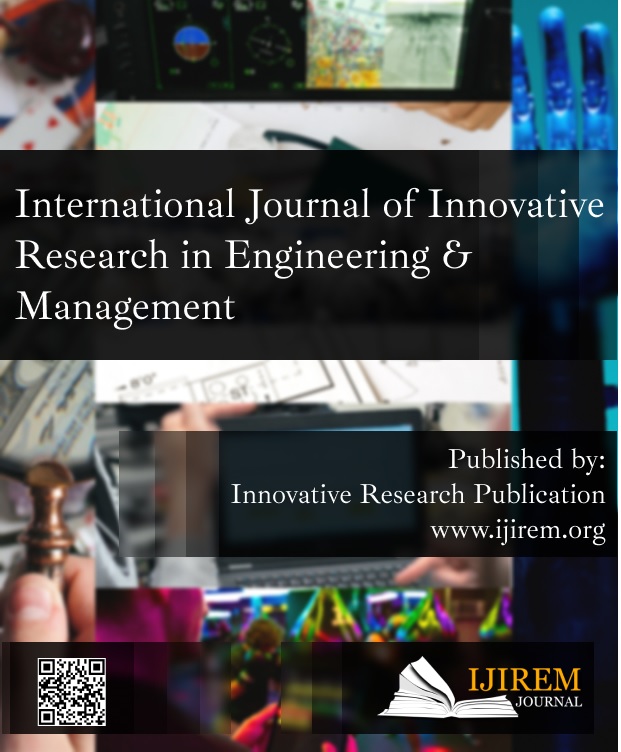Wildlife Health and Public Trust Responsibilities for Wildlife Resources
Keywords:
Animal, Health, Population, ResourcesAbstract
The growing concern among wildlife experts and the public regarding animal health and illnesses is a major trend in wildlife management. Simultaneously, the wildlife profession is reconsidering the ramifications of managing wild populations as a people's confidence, as well as the obligation that comes with it to preserve the quality (i.e., health) and long-term viability of wildlife. It's an excellent time to emphasise the importance of wildlife health as well as to advocate for comprehensive and consistent wildlife health integration in wildlife management. Researchers look at how public trust principles have been applied to animal population control in the United States in this research. Humans feel that wildlife health is vital to fulfilling public trust administration obligations with relation to wildlife since it is trustees' principal responsibility to protect the well-being of wildlife species (i.e., the core resources of the trust). Since both wildlife hazard - health perception about the threats posed by wildlife diseases to humans and household pets are rising issues, wildlife sickness and risk communication in connection to wildlife health are vital to wildlife trust management. We suggest that wildlife health specialists are critical to maintaining the wildlife trust, and that current conditions enable wildlife health care professionals to contribute significantly to wildlife management.
Downloads
References
S. Hussain, A. Singh, A. Habib, M. S. Hussain, and A. K. Najmi, “Comment on: ‘Cost Effectiveness of Dialysis Modalities: A Systematic Review of Economic Evaluations,’” Applied Health Economics and Health Policy. 2019, doi: 10.1007/s40258-019-00485-4.
R. K. Mahat, S. Panda, V. Rathore, S. Swain, L. Yadav, and S. P. Sah, “The dynamics of inflammatory markers in coronavirus disease-2019 (COVID-19) patients: A systematic review and meta-analysis,” Clinical Epidemiology and Global Health. 2021, doi: 10.1016/j.cegh.2021.100727.
T. H. E. W. Zoo, A. Animal, and W. Strategy, Caring for Wildlife. 2006.
M. Songer, “Wildlife ecology,” in Encyclopedia of Ecology, 2018.
S. M. Redpath, S. Bhatia, and J. Young, “Tilting at wildlife: Reconsidering human-wildlife conflict,” ORYX, 2015, doi: 10.1017/S0030605314000799.
J. L. Rachlow, “Wildlife Ecology,” in Encyclopedia of Ecology, Five-Volume Set, 2008.
N. Upadhyai and S. K. Gupta, “Utilization of postnatal care services and factors affecting it among women of urban slums in Dehradun, Uttarakhand,” Indian J. Community Heal., 2019.
P. Yadav, V. Nageshwar, and J. Prabhu, “Reproductive and sexual health knowledge and utilization of services among adolescents: A review based on available literature,” Indian Journal of Public Health Research and Development. 2019, doi: 10.5958/0976-5506.2019.02817.1.
A. Nurse, “Policing Wildlife: Perspectives on Criminality in Wildlife Crime,” Pap. from Br. Criminol. Conf., 2011. [10] D. J. Decker, K. Schuler, A. B. Forstchen, M. A. Wild, and
W. F. Siemer, “Wildlife health and public trust responsibilities for wildlife resources,” J. Wildl. Dis., 2016, doi: 10.7589/2016-03-066.
P. Chardonnet, B. Des Clers, J. Fischer, R. Gerhold, F. Jori, and F. Lamarque, “The value of wildlife,” OIE Rev. Sci. Tech., 2002, doi: 10.20506/rst.21.1.1323.
A. R. Morla, B. S. Ilayaraja, and U. Praveen, “What determines gender preference at birth? A review based on
available literature,” Indian J. Public Heal. Res. Dev., 2019, doi: 10.5958/0976-5506.2019.01924.7.
N. Rao, M. Hemalatha, and V. Nageshwar, “Examining preconception care related to knowledge among reproductive age women: A narrative review,” Indian J. Public Heal. Res. Dev., 2019, doi: 10.5958/0976- 5506.2019.00253.5.
S. J. Casey and A. M. Casey, “Wildlife rehabilitation: Expanding the wildlife management framework,” J. Wildl. Rehabil., 1996.
T. Caro and T. R. B. Davenport, “Wildlife and wildlife management in Tanzania,” Conserv. Biol., 2016, doi: 10.1111/cobi.12658.
R. L. Bruggers, R. Owens, and T. Hoffman, “Wildlife damage management research needs: Perceptions of scientists, wildlife managers, and stakeholders of the USDA/Wildlife Services program,” Int. Biodeterior. Biodegrad., 2002, doi: 10.1016/S0964-8305(02)00042-2.
V. Jain and V. K. Singh, “Influence of healthcare advertising and branding on hospital services,” Pravara Med. Rev., 2019.
F. Khan, U. Praveen, G. Kaur, Deepika, and D. Singh, “Awareness of undergraduate students regarding blood donation among non-medical colleges in selected setting,” Indian J. Public Heal. Res. Dev., 2018, doi: 10.5958/0976- 5506.2018.01813.2.
D. S. Subha and T. Pradeep, “Periodontal Therapy with 0.25%Lemongrass Oil Mouthwash in Reducing Risk of Cardiovascular Diseases: A 3-Arm Prospective Parallel Experimental Study,” Ethiop. J. Health Sci., 2017, doi: 10.4314/ejhs.v27i5.12.
A. Srivastava, V. Rastogi, and R. Rastogi, “Improve children health - Best investment for better tomorrow,” J. Int. Med. Sci. Acad., 2017.
Sunidhi, V. Nageshwar, and S. Joshi, “A descriptive study to assess the adjustment problems faced by 1st year B.Sc. (N) students,” Indian J. Public Heal. Res. Dev., 2017, doi: 10.5958/0976-5506.2017.00072.9.
P. Singh, V. Nageshwar, and R. Krishnaveni, “A study to assess the effectiveness of ginger remedy in reduction of dysmenorrhea among adolescent girls,” Indian J. Public Heal. Res. Dev., 2017, doi: 10.5958/0976- 5506.2017.00110.3.
R. Gangal, A. haroon, M. Yadav, and V. K. Chavada, “Sex determination from sternal end of 4th rib in western U.P. population: An autopsy study,” J. Indian Acad. Forensic Med., 2012.
A. Ahmad et al., “Evaluation of knowledge, attitude and practice about self-medication among rural and urban north Indian population,” Int. J. Pharm. Clin. Res., 2015.
L. Gade, S. Lunawat, K. Jagtap, S. Choudhary, M. Mahajani, and V. Kadam, “Incidence of grinspan syndrome among tribal and suburban population of Maharashtra - A cross sectional study,” Indian J. Dent. Res., 2021, doi: 10.4103/ijdr.IJDR_649_19.
